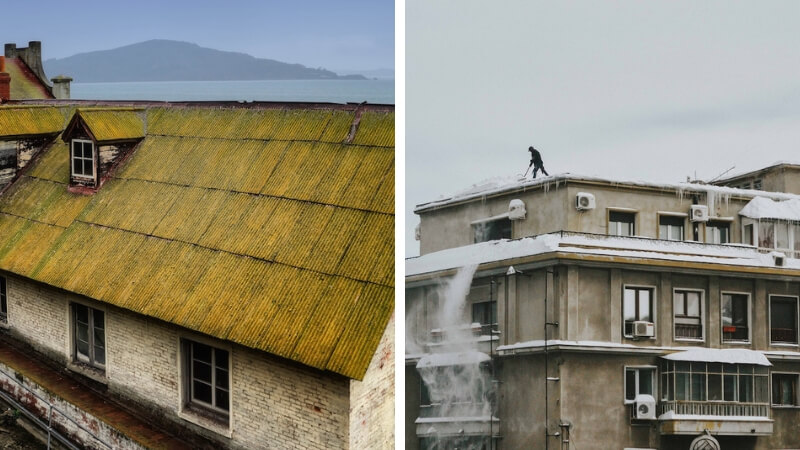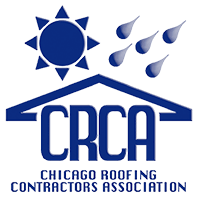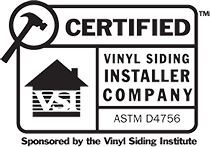If you’ve got a particularly steep roof and need to get onto it to either clean or repair, you might be wondering where to start. if you haven’t done this sort of work before, it’s important that you follow safety guidelines and never rush your work.
While all roof work can be dangerous, it can be especially hard to work on a steeper pitched roof. If you want to know how, then you’re in the right place.
In this article, we’re going to look at how to work on a steep roof and some of the issues around a steeper roof as well as some tips on how to safely work on one.
There’s a reason why homes have pitched roofs, and why some roofs are steeper than others—and it might be important to find out a bit more about these reasons before you start working on them.
As with all roof work, safety is your number one concern. We’re going to look at the sort of equipment you’ll need as well as some more tips to help you get the job done effectively. Never take short cuts or compromise on safety.
How to work on a steep roof – The benefits of pitched roofs 
If every roof was flat, there’d be a lot more leaks and water damage. Pitched roofs are there for a reason, they help the flow of rainwater and even snow to move away from the roof. otherwise it would settle in a puddle. Over time these puddles can cause rot, mildew and other issues. They also create issues with leaks. While some industrial buildings have flat roofs, these don’t have people living in them.
Some home builders have started installing flat roofs to homes. This can be ok in areas that don’t get much rain or snow, or if special guttering and other drainage is put in place. Otherwise, for most standard homes in normal areas, you need a pitched roof.
Why some homes have steeper roofs
While pitched roofs are important, you might have noticed some roofs are much steeper than others. This is for a few reasons. Firstly, local building codes might require a specific pitch amount. Some homes will have higher pitched roofs because they like the aesthetic, while others might have a larger room underneath the roof if it’s in a roof conversion.
An even steeper pitched roof might also be beneficial to homes as it helps water run off much faster. This is especially useful in areas that get a lot of rain where a standard pitch might not do the job well enough.
A steeper pitch can also reduce the risk of ice damage in the winter. Another benefit of a steeper pitch is that you can get more UV to your roof if you’ve got solar panels. You’ll also have more choice of roofing materials on a steeper roof.
While there are clearly some benefits to steeper roofing, it doesn’t make them easier to work on. If you want to know how to work on a steep roof, let’s have a look:
How to work on a steep roof
As we touched on earlier, safety should always be your number one priority with all roofs, especially steep ones. If you haven’t carried out this sort of work before or aren’t sure if you can do a safe job, then hire a team of experts instead.
- Get the right equipment
If you do decide to carry out the work yourself, you’ll need to make sure you’ve got the right safety equipment. Let’s have a look at what you need…
- Scaffolding
You probably need to know what you’re doing here, but scaffolding can help you get up to the side of your roof more safely without actually standing on the roof itself. If this works for the type of roof job you’re going to be doing, then it could be a good option.
Scaffolding can be good for roof inspections and other similar jobs where you don’t necessarily have to stand on the roof itself, although it can be an expensive and time-consuming option just for this.
- Roof harness
If your roof is really steep, it might not be possible to even use scaffolding. If you know what you’re doing, you can use a roof harness to help you. Harnesses generally come with a rope, anchor and harness, along with an adjustable lanyard.
Anchor the harness in-place carefully using lag bolts into the rafters of the roof. This keeps you extra secure. Adjust the tension in the rope with the lanyard as you move across the roof.
Harnesses are a good option, but remember that you’ll need to re-anchor it if you need to move too far away. You’ll need to be extremely careful when anchoring the harness as you won’t have any support at that point. You should never try and carry out any work or move across the roof quickly before anchoring the harness.
- Roof jacks
These are also sometimes known as brackets and can be purchased from many DIY stores. Fix the brackets in place and then nail a wooden board to them. These can help you walk across sections of your roof carefully as long as they are secured in place properly. Each jack is made to fit to the underside of the top layer of shingles.
- Ladders
The standard piece of equipment for most roof work is a set of ladders. Make sure you’ve got someone to hold the bottom and only work steadily and carefully. Never use ladders if they aren’t in a secure and safe place. Ladders can be acceptable to get to the bottom side of a roof but you might need other equipment to do more advanced work on a steep roof.
2. Check the conditions
Never do roof work when it’s raining or windy. Make sure you’ve checked the forecast and only attempt roof work, especially on steep roofs, when the conditions are acceptable.
3. Work safely and methodically
Don’t rush your roof job. Always work safely, slowly and securely, Make sure you’re in full control at all times.
4. Get supervision
If you need help, ask an expert to supervise you. You could even hire a roofing firm to do the whole job if necessary.












